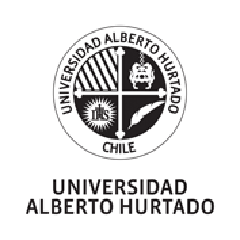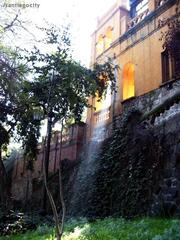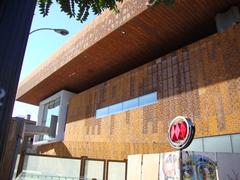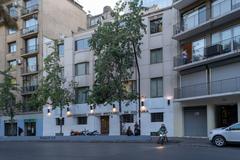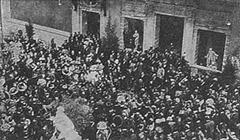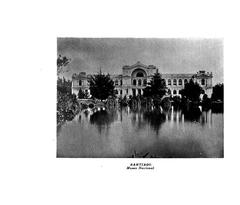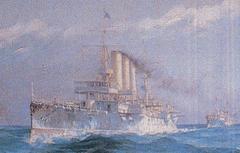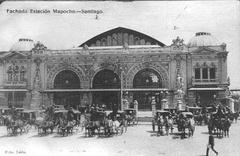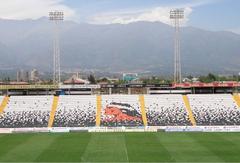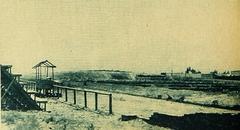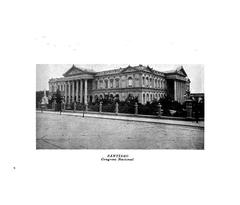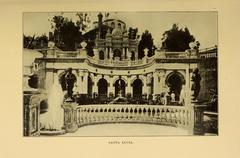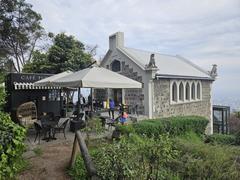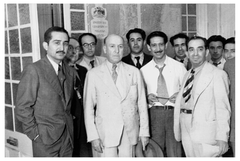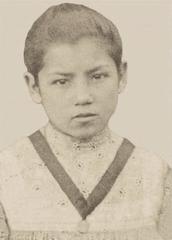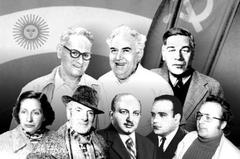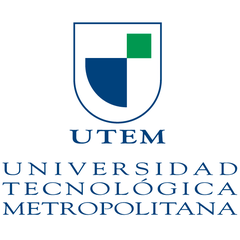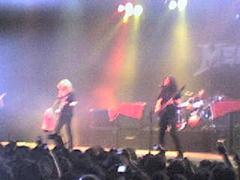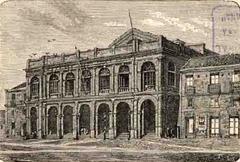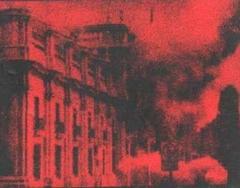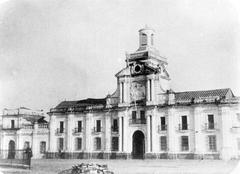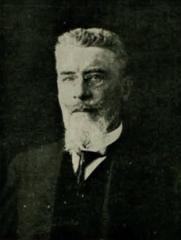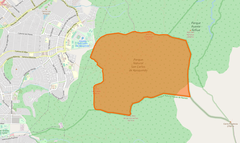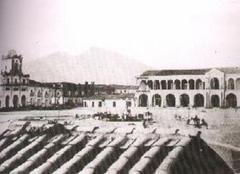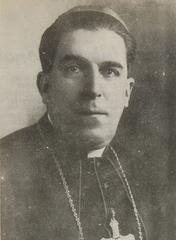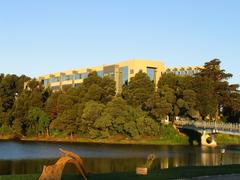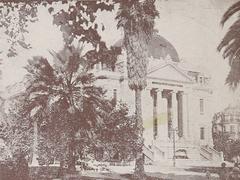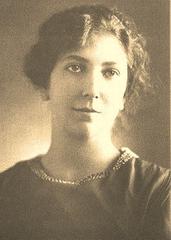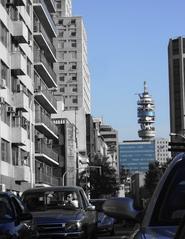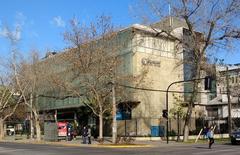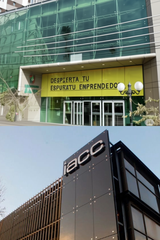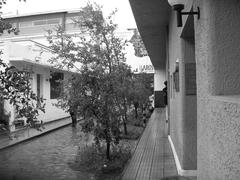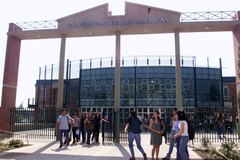
Daniel Zamudio Memorial Sites in Santiago, Chile: Visiting Hours, Tickets, and Historical Significance
Date: 04/07/2025
Introduction
The Daniel Zamudio Memorial sites in Santiago, Chile, are profound spaces dedicated to the memory of Daniel Mauricio Zamudio Vera—a young gay man whose tragic murder in 2012 transformed the nation’s approach to LGBTQ+ rights. His death at the hands of a neo-Nazi-linked group ignited public outrage and led directly to the passage of the landmark “Ley Zamudio,” an anti-discrimination law that provided crucial protections for Chile’s sexual minorities. Today, the memorials—including sites within Cementerio General, Parque San Borja, and dedicated plazas—function as enduring symbols of remembrance, activism, and the ongoing struggle for equality in Chilean society.
This guide offers in-depth information for visitors interested in the memorials’ historical context, accessibility, visiting hours, cultural significance, and practical travel tips. Whether you are a local, a human rights advocate, or a traveler seeking to understand Chile’s evolving landscape of diversity and inclusion, a visit to these powerful sites provides an opportunity for reflection and engagement with the country’s human rights journey.
For official updates and events, consult the Movimiento de Integración y Liberación Homosexual (MOVILH) and the MOVILH Official Memorial Page.
Table of Contents
- About the Daniel Zamudio Memorial
- Historical Context
- Memorial Locations and Accessibility
- Visiting Hours and Admission Details
- Features and Experiences at the Memorials
- Nearby Attractions in Santiago
- Travel Tips for Visitors
- Frequently Asked Questions (FAQ)
- Visual and Interactive Resources
- Additional Resources and Links
- Conclusion and Call to Action
- References
About the Daniel Zamudio Memorial
The Daniel Zamudio Memorial is a series of commemorative spaces across Santiago, each honoring Zamudio’s life and the broader fight for LGBTQ+ rights in Chile. These sites present sculptures, plaques, interactive exhibits, and reflection gardens designed to educate and inspire visitors, while also offering a place for quiet contemplation. The memorials not only commemorate a tragic event but also celebrate resilience and the progress achieved through collective action.
Historical Context
Daniel Zamudio, born August 3, 1987, in Santiago, faced personal adversities but maintained hope for a brighter, more inclusive future. On March 2, 2012, he was attacked by a neo-Nazi-affiliated group in Parque San Borja due to his sexual orientation. After three weeks in a coma, Daniel died on March 27, 2012. His murder shocked Chile and the world, catalyzing the passage of the Anti-Discrimination Law (“Ley Zamudio”) later that year, which prohibits discrimination based on sexual orientation, gender identity, and other grounds (BBC News: Chile passes anti-discrimination law, Human Rights Watch: Hate Crimes in Chile).
Memorial Locations and Accessibility
1. Memorial por la Diversidad (Cementerio General)
- Address: Avenida Recoleta 1710, Recoleta, Santiago, Chile
- Accessibility: Wheelchair-friendly paths; some uneven terrain may be present
- Features: Main memorial with symbolic artwork and plaques honoring Zamudio and other victims of hate crimes
2. Parque San Borja
- Location: Centrally situated, accessible via Metro and major avenues (Virtual Globetrotting)
- Accessibility: Wheelchair-accessible; ongoing proposals seek to improve universal design
- Features: Commemorative plaque at the site of the attack; annual ceremonies and activism
3. Plaza Parque Daniel Zamudio (San Bernardo)
- Location: Metropolitan area of San Bernardo
- Accessibility: Open public plaza, designed for community inclusion
- Features: Green space dedicated to Daniel Zamudio, highlighting diversity
Visiting Hours and Admission Details
- Cementerio General Memorial: Open daily from 8:00 AM to 6:00 PM; free entry
- Parque San Borja: Open from dawn until dusk; free access
- Plaza Parque Daniel Zamudio: Open 24 hours; free access
- Guided Tours: Offered occasionally by LGBTQ+ organizations (e.g., MOVILH); check for event schedules
Features and Experiences at the Memorials
- Sculptures and Plaques: Artistic representations symbolizing the fight against homophobia, with detailed narratives
- Interactive and Multimedia Exhibits: Displays on LGBTQ+ rights history and Daniel’s life
- Reflection Gardens: Serene areas for contemplation and remembrance
- Annual Commemorations: Public ceremonies with speeches, performances, and moments of silence every March, particularly around March 27th
Nearby Attractions in Santiago
- Museo de la Memoria y los Derechos Humanos: A museum dedicated to Chile’s human rights legacy
- Centro Cultural Gabriela Mistral (GAM): A dynamic cultural venue for exhibitions and performances
- Barrio Lastarria & Plaza de Armas: Vibrant districts rich in history, art, and gastronomy
Travel Tips for Visitors
- Best Time to Visit: Weekdays for a quieter experience; March for commemorative events
- How to Get There:
- Metro: Nearest station to Cementerio General is Cementerios (Line 2) (Santiago Metro Information)
- Taxi/Ride-share: Readily available in Santiago
- Parking: Limited near cemetery and parks
- Safety: Sites are generally safe during daylight; exercise caution after dark
- Photography: Allowed, but be respectful—especially during ceremonies. Avoid photographing people during private moments without consent
Frequently Asked Questions (FAQ)
Q: Is the memorial suitable for children and families?
A: Yes, the memorials are educational and suitable for all ages.
Q: Are there entrance fees or tickets required?
A: No, all memorial sites are free to access.
Q: Can I participate in annual commemorations?
A: Yes, commemorative events are open to the public, usually around March 27th.
Q: Is the site accessible for visitors with disabilities?
A: Yes, the main memorials are wheelchair accessible.
Q: Are guided tours available?
A: Occasionally, organized by MOVILH and other local organizations.
Visual and Interactive Resources
- Official photos, virtual tours, and interactive maps are available on the MOVILH Official Memorial Page. These resources include descriptive alt text for accessibility.
Additional Resources and Links
- Movimiento de Integración y Liberación Homosexual (MOVILH)
- Santiago Metro Information
- USC Public Diplomacy on Chilean LGBTQ+ Reforms
- Regionalista.cl Article on Zamudio
- The Clinic - Parque San Borja Memorial Details
- Escándala - Daniel Zamudio Case Overview
Conclusion and Call to Action
Visiting the Daniel Zamudio Memorial sites in Santiago is a transformative experience—one that connects visitors with the ongoing struggle for human rights and the celebration of diversity in Chile. These sites provide educational resources, spaces for reflection, and platforms for activism, ensuring Daniel’s legacy endures. Attending commemorative events, exploring the memorials, or supporting local advocacy organizations like MOVILH contributes to the fight against discrimination and honors those affected by hate.
Stay informed about upcoming events and resources by following MOVILH and Fundación Daniel Zamudio, and consider using the Audiala app for real-time updates and travel tips. Every visit and act of remembrance helps sustain the collective memory and drive progress towards equality.
References and Further Reading
- MOVILH Official Memorial Page
- BBC News: Chile passes anti-discrimination law
- The Clinic - Parque San Borja Memorial Details
- Escándala - Daniel Zamudio Case Overview
- Santiago Metro Information
- Human Rights Watch: Hate Crimes in Chile
- Regionalista.cl Article on Zamudio


